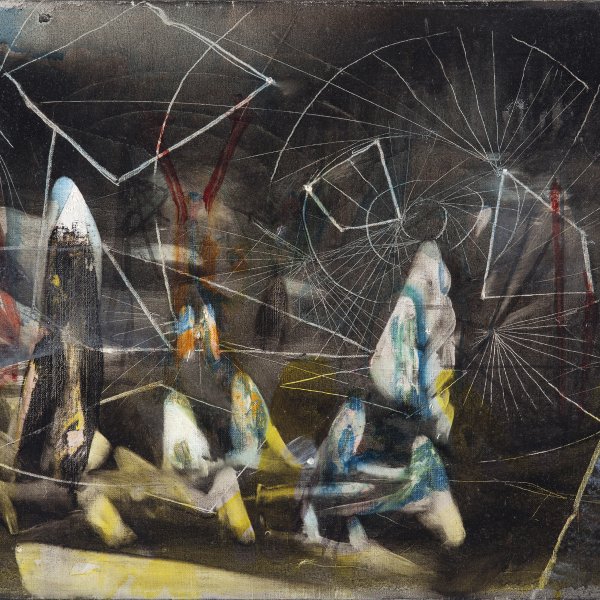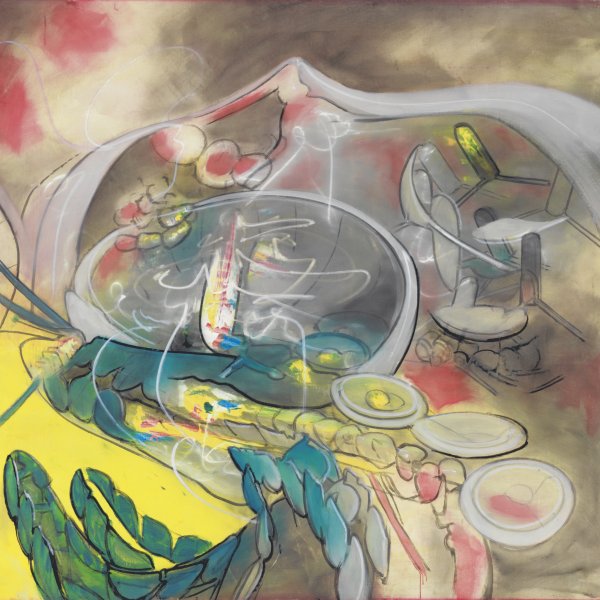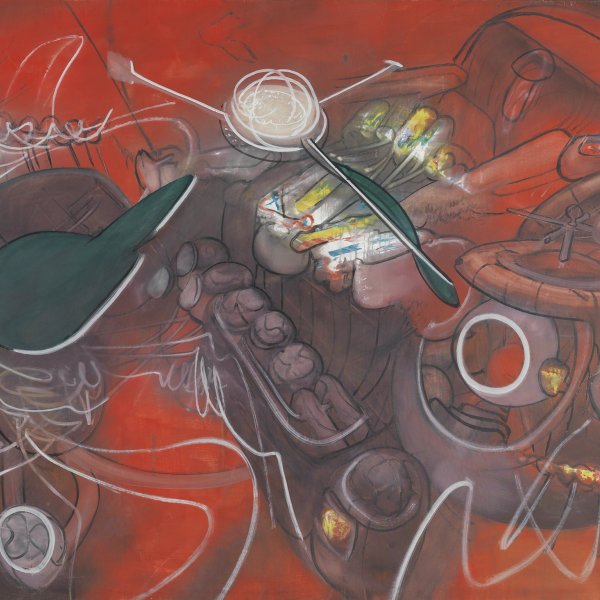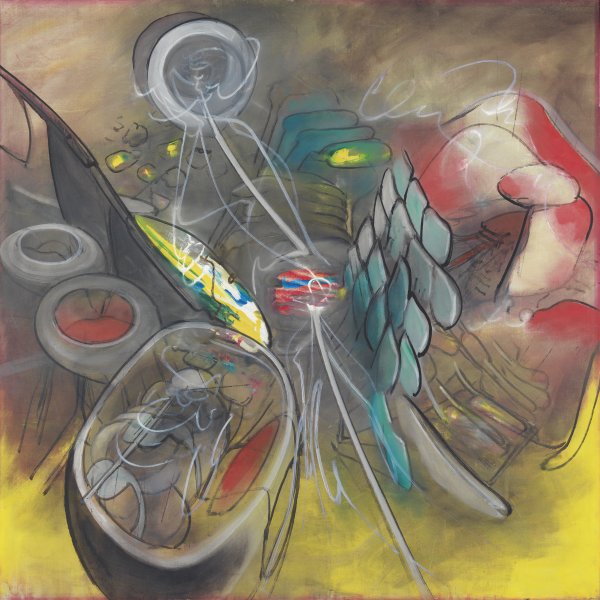The Surrealist movement, to which the Chilean painter Roberto Sebastián Antonio Matta was linked for a time, particularly during his New York exile, gradually waned after the Second World War and finally died out, although its spirit remained latently alive in certain aspects of the automatism of the new abstract languages. On returning to Europe, Matta began to work on large canvases and on a few mural paintings — like those he made for the Chilean brigades of muralists — and his painting, which was never inclined to abstraction, reinforced his most visionary side while displaying increasing social awareness as a result of the emergence of the political and social movements spawned by the Vietnam War. “My paintings, ” wrote Matta, “are an example of the conflict between the need to change the world and other people’s lives and the need to change my life.”
In a text written in 1965, Matta stated that the artist has become an “exile, ” a repudiated person who should raise the viewer’s awareness:
“ L’Honni aveuglant is the idea of a character that exists in stories and all sorts of situations: you hate him and at the same time you can’t do without him. For example: Marat in the French Revolution or Trotsky in the Russian Revolution. They are beings who, in spite of being excluded, continue to dazzle.”
“The function of the artist in our society consists of being this dazzling, repudiated personality, like the child in Andersen’s tale who is the only one to say the king is naked. This situation of the denouncing of scandal makes him a minority. So for the artist it is not a question of establishing a relationship between blue and green; these aesthetic paintings are more or less possessed by those who view them. I, in contrast, want to disturb, so that the viewer becomes a minority. I want these viewers, instead of possessing the painting, to be possessed by it, to be bombarded by an enormous amount of awareness that reaches them. Trapped in an unbearable situation because of this painting, they are obliged, they too, to carry out a poetic act of creation to make it their own: besieged by the real, they feel overcome and, therefore, they reflect.”
“This form of awareness, this act of liberation, may be affirmed in them little by little, until it becomes a revolutionary outlook.”
“It is then that the dialogue with the artist is established. L’Honni aveuglant, as I have called it, apparently makes life difficult, since it wants to disturb; but it does so in order to make it clearer, more lucid. More beautiful.”
This is the central idea of The Dazzling Outcast cycle, a set of five large canvases with a spatial and cosmic meaning that depict various galaxies and amorphous forms of organic matter belonging to a fantasy world. When the series was first exhibited at the Galerie Alexandre Iolas in Paris in 1966, two of the canvases, Where Madness Dwells A and Where Madness Dwells B, were shown suspended horizontally from the ceiling, forming a box with the other three that were hung on the walls. The viewer was forced to immerse himself in Matta’s pictorial universe — a hermetic, hallucinatory universe infused with literary, spiritual and artistic references, which, as Marcel Duchamp stated, “reveal to us regions of space that were hitherto unknown to art.” The similarity between these images and a foetus’s view of the placenta and the glands and liquids inside the womb make the installation a symbolic representation of the uterus.
Paloma Alarcó
24 December: open from 10.00pm to 3pm. 25 December: museum closed.
 Search
Ir al contenido principal
Search
Ir al contenido principal
Private and/or didactic use
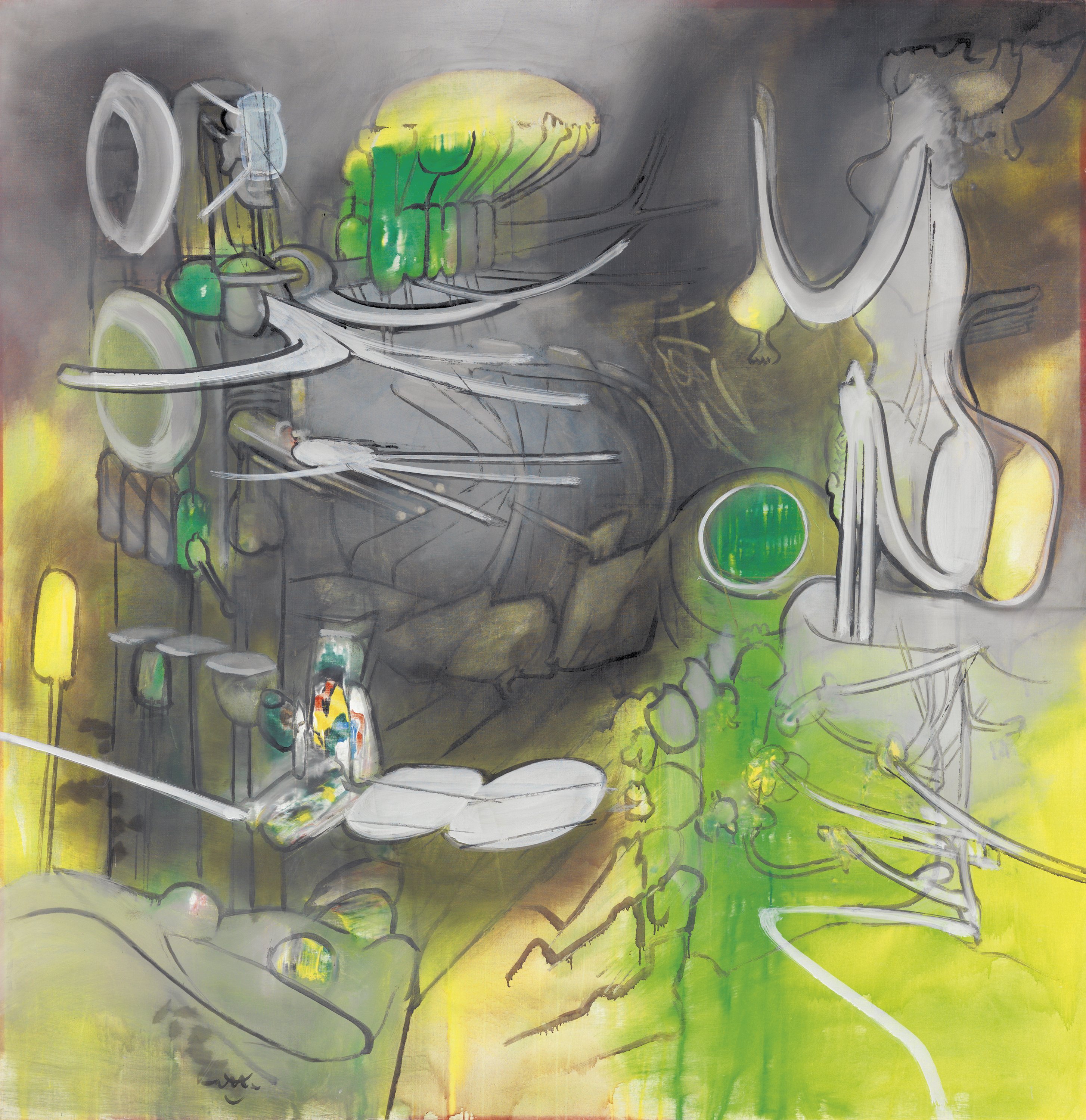

The Where at Flood Tide. From the Cicle: The Dazzling Outcast
Matta
©
Roberto Matta. ADAGP, Paris / VEGAP, Madrid
Download image
Commercial use


The Where at Flood Tide. From the Cicle: The Dazzling Outcast
Matta
©
Roberto Matta. ADAGP, Paris / VEGAP, Madrid
Download image




